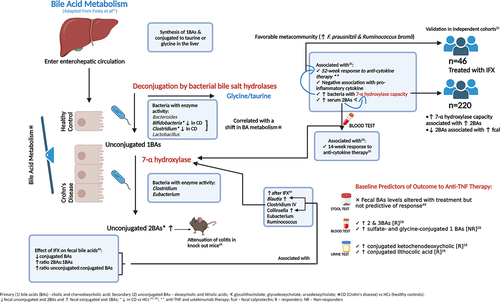💡 Inflammatory Bowel Disease (IBD) poses a significant challenge in terms of therapeutic response variability. This systematic review aims to elucidate key microbiome predictors associated with treatment response and explores the emerging fields of mycobiomes and viromes.
📍 Microbiome Predictors:
📌 a. Key Themes:
i. Abundance of SCFA-producing bacteria and opportunistic bacteria emerge as potential biomarkers of treatment response.
ii. Metabolic pathways related to butyrate synthesis are highlighted, emphasizing the role of SCFAs in mucosal barrier function and anti-inflammatory properties.
iii. Non-butyrate metabolomic predictors, including Bile Acids (BAs), amino acids, and lipids, demonstrate potential associations with treatment response.
iv. Mycobiome predictors of response represent a novel avenue for exploration.
📌 Predictive Indices:
i. Several studies introduce predictive indices using baseline or delta values, showcasing the superiority of microbial predictors over clinical or biochemical biomarkers.
ii. A single study presents a predictive model with independent validation, offering insights into potential therapy selection.
📍 Mechanisms and Associations:
📌 a. SCFAs:
i. SCFAs, particularly acetate, propionate, and butyrate, produced by Bacillota, influence colonic epithelial cells and exhibit anti-inflammatory properties through various pathways.
ii. Bifidobacterium’s association with SCFA production and mucosal barrier function is explored.
📌 b. Bile Acids (BAs):
i. The interplay between BAs, microbiota, and luminal inflammation is investigated, with studies demonstrating associations between microbial diversity, BA synthesis, and differential responses to advanced therapy.
ii. Limited data on other metabolites and the mycobiome necessitate further exploration.
The challenges in understanding the bidirectional relationship between dysbiosis and inflammation in IBD underscore the need for collaborative multiomic analyses. Ongoing multicenter studies hold promise for refining predictive models, ultimately guiding treatment decisions for improved long-term patient outcomes.
Link to the article: https://tinyurl.com/yfcnpbhc
